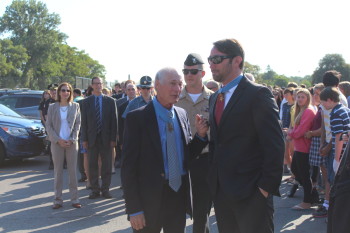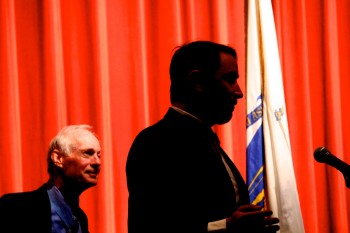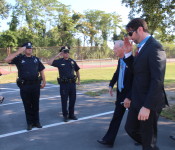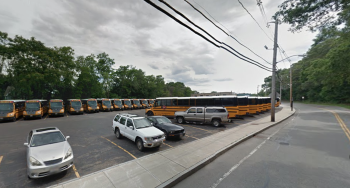Photo: Belmont High School
Ten consecutive times the state agency created to assist Massachusetts communities in financing new school projects rejected the Belmont School District’s request to renovate the increasingly threadbare high school building on Concord Avenue.
That dubious streak may finally come to an end in 2016 as the Massachusetts School Building Authority selected the nearly $100 million renovation of the 45-year-old Belmont High School and the construction of a new science wing as one of 26 projects across the state the authority has chosen for a final funding review.
“This is great news for the town of Belmont as it represents a unique opportunity for our community as we have submitted an application for this project annually for over ten years,” said Belmont District Superintendent John Phelan.
This year, nearly 100 Statement of Interests from nearly the same number of school districts were submitted to the MSBA, Authority spokesperson Matt Donovan told the Belmontonian two weeks ago.
The Authority will make its decision on which projects it will approve for eventually financing at its monthly meeting on Jan. 27, 2016. Last year, the MSBA selected 16 projects from a group of 28.
While being passed over by the MSBA for a decade, it did not come as a complete surprise that Belmont’s “time” for a final review was close at hand. In October 2014, a team of architects and engineers associated with the School Building Authority conducted a “senior study” of the 45-year-old brick and concrete structure, asking a lot of questions of school and town officials while poking around the building.
Proposed projects that receive a “senior study” are seen as having a high level of being recommended to “move forward with an invitation” of being in the final group.
If current trends continue, Belmont should be reimbursed by the MSBA for approximately a third of the total construction costs.
The renovation price tag based on an updated 2008 estimation of the 2004 masterplan which would include using a single general contractor over four years was $79.6 million. With eight years of inflation added to the 2008 figure, the total cost is now close to $100 million.
With a third coming from the MSBA, the total cost to Belmont taxpayers is likely to be in the $66 to $70 million range.
A MSBA-financed project similar to Belmont is taking place in Winchester where a new high school that includes three new buildings is currently one-third finished. The $131.9 million project received 34 percent state reimbursement, requiring Winchester to pass a $90 million debt exclusion.
- Construction at the school will take place in four phases over four years so students will remain on the existing campus,
- All construction will be held within the current 257,000 sq.-ft. footprint of the current building, and
- A 34,000 sq.ft. modern science wing will be built in the proximity of the parking lot adjacent the Wenner Field House and the Higginbottom Pool.
The renovation of the five-decade-old school building is critical as it is currently “structurally unsound” and “jeopardize the health and safety of the school children,” according to Belmont’s 2014 SOI submitted to the MSBA.
With the building of a science center, which will add 13.5 percent more classroom and lab space to the school, “it will eliminate the existing severe overcrowding” at the school. The district is also predicting an additional 254 students at the high school by fiscal 2024.
The SOI notes that Belmont High School is in danger of losing its regional accreditation due to the “negative impact on students … to achieve a 21st Century learning experience” in a building where critical infrastructure are now “beyond its normal life span.” This year, more than a million dollars was directed to rebuild the school’s fire alarm system which is so dated there is a lack of parts to repair the mechanism.
This year, more than a million dollars was directed to rebuild the school’s fire alarm system which is so dated there is a lack of parts to repair the mechanism. Without the change, the Belmont Fire Department warned the building could be closed for safety.










